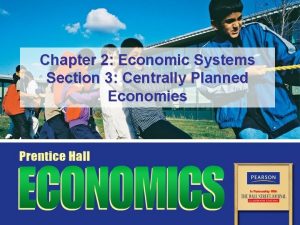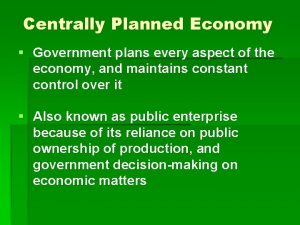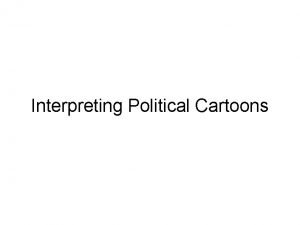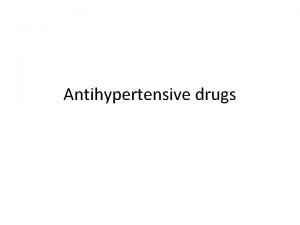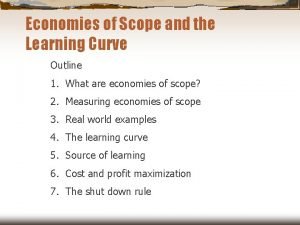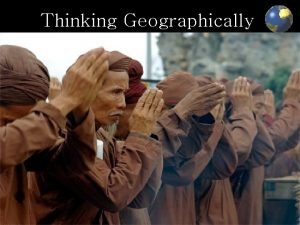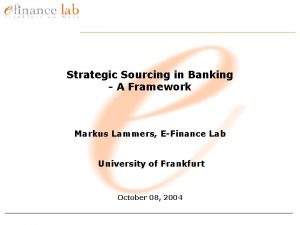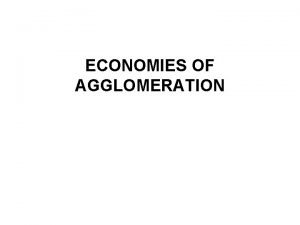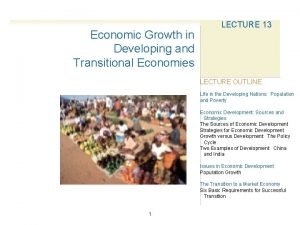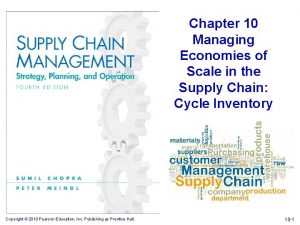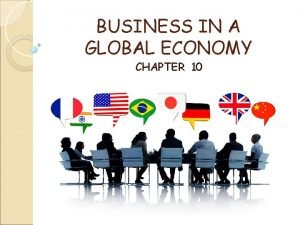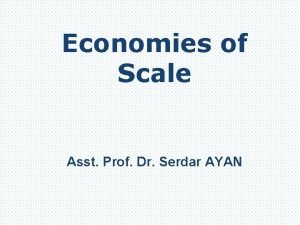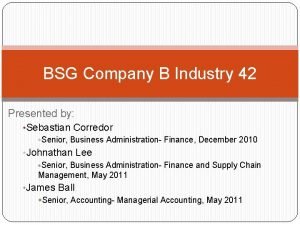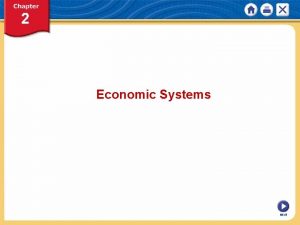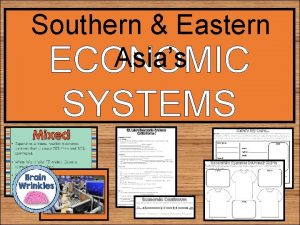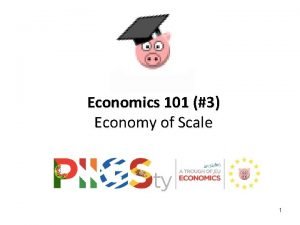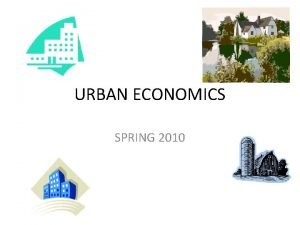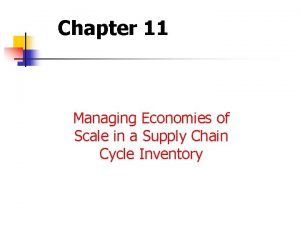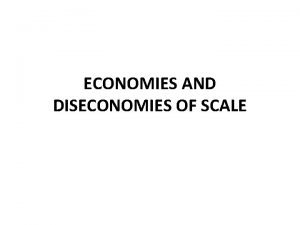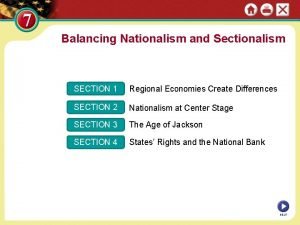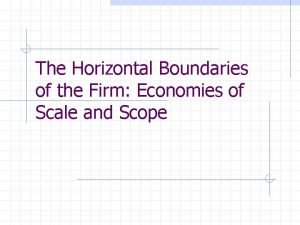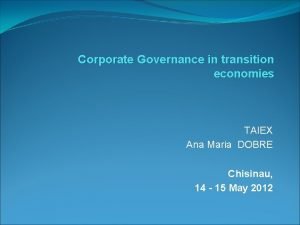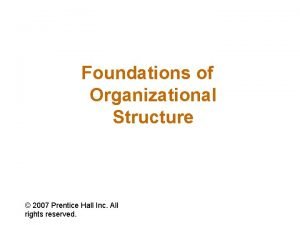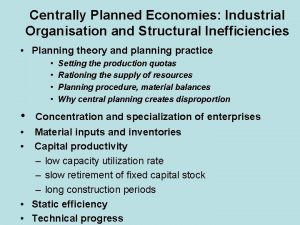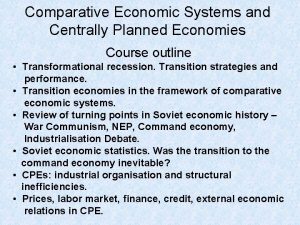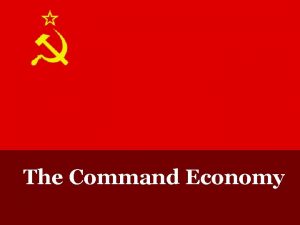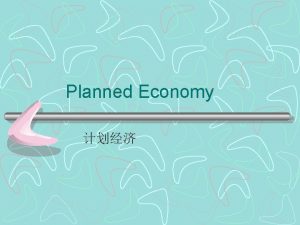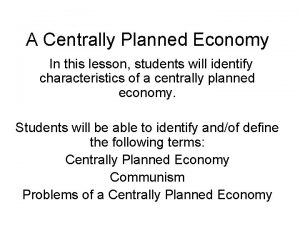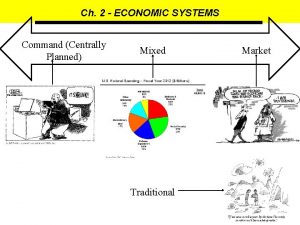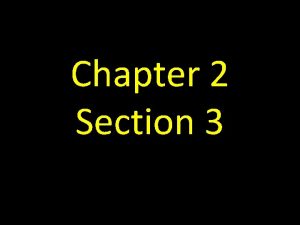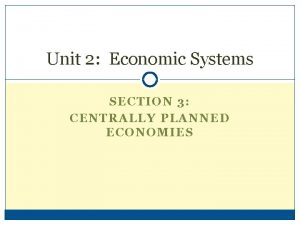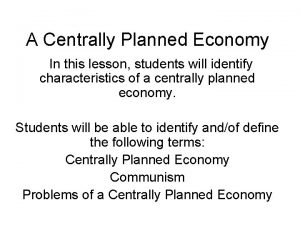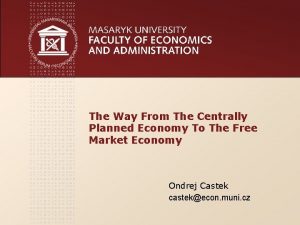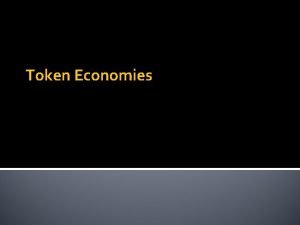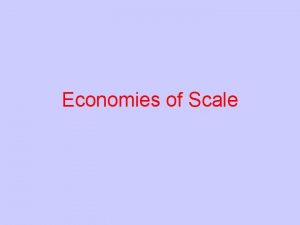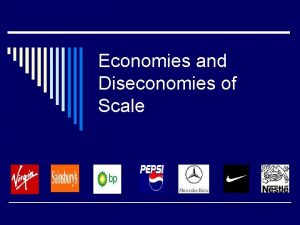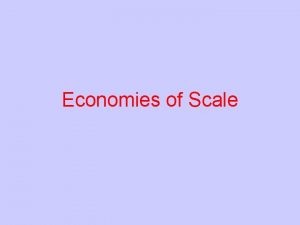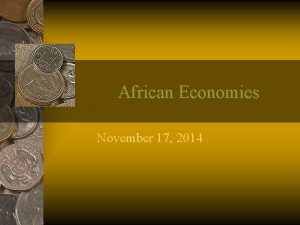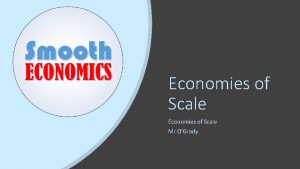Centrally Planned Economies How is a Centrally planned





























- Slides: 29

Centrally Planned Economies

How is a Centrally planned Economy Organized? • Direct contrast to free market economy • Central government answers key economic questions • Government owns factors of production, set quotas on what to produce • Self interest and competition absent from system • There is no consumer sovereignty

Socialism and Communism • Socialism political and social philosophy based on belief that democratic means should be used to distribute the wealth • Public controls centers of economic power • Government owns major industries • Communism economic and political power lies in the hands of the central government • Society can only change after a violent revolution and all government is authoritarian

The Former Soviet Union • Russian Revolution in early 20 th century led to rise of communism and central planning • USSR concerned with status as world power • Allocated all factors of production and put resources in hands of armed forces, factories and agriculture • Agriculture and industry established quotas to and distribution systems planned by central government • Took away incentive for production, quality and innovation • Left consumers with low quality goods because state had to buy them • Makers of consumer goods and consumers experienced the burden of this opportunity cost

Problems with Centrally Planned Economies • Can be used to jumpstart industries and guarantee jobs and income • Stalin had some success in USSR with heavy industry Disadvantages a. Lack of incentive can lead to poor quality goods and diminishing production b. Performance always falls short of ideals c. Systems lack flexibility to meet consumer demands and wants d. Sacrifice individual freedom for societal goals • Few countries have centrally planned economies because experiment has failed • Many countries are moving toward a mixed economy

Modern Economies

The Rise of Mixed Economies • Most contemporary economies are mixed economies that blend the market and government intervention Limits of Laissez Faire • Smith thought free market brought greatest benefit and raised standard of living ▫ Laissez faire doctrine that government should not interfere in marketplace • Over time market economies have evolved, needs an wants of society are difficult to meet in a totally free marketplace

The Rise of Mixed Economies • Governments create laws protecting property, enforcing contracts and insisting on competition • Provides incentive for innovation, and keeps one firm from dominating marketplace • Society has to assess values and prioritize economic goals • Some goals met better by market and some by government • Each nation decides opportunity cost to pursue goals (what they have to give up)

Circular Flow of Mixed Economy Government purchases land, labor and capital from households in the factor market (federal employees) Government purchases goods and services in the product market (office supplies) Government provides goods and services through combination of factor resources (ex. roads) Government collects taxes from individuals, businesses and transfers it across the economy

Comparing Mixed Economies • Foundation of US economy is free market (private ownership of capital goods) where individuals make decisions rather than the state • At one end lies North Korea at the other is Hong Kong

Comparing Mixed Economies • North Korea- almost totally controlled by the government, business owned by government and imports banned • China- economy is dominated by government, many enterprises are becoming owned by individuals (privatization), China is a transition economy • Hong Kong- one of the worlds freest markets, private sector rule and there is rarely government interference except to control some rents and wages

American Free Enterprise

Tradition of Free Enterprise • America considered “land of opportunity”, can achieve success through hard work • Why has America had economic success? • Open land, natural resources, open (? ) immigration, tradition of free enterprise (commitment to giving people freedom and flexibility to compete in the marketplace)

Constitutional Protection • Constitution guarantees rights that allow people to engage in business activities • Property rights- 5 th, 14 th Amendments • 5 th Amendment protects property rights from government interference, 14 th amendment limits state governments from taking property • Government must provide a fair price for property that is taken (imminent domain)

Constitutional Protection • Taxation • Constitution has basic rules to tax individuals and businesses • 16 th Amendment (1913) gave Congress power to tax based on income • Article I, Sec. 10 gives businesses the right to make contracts, term can’t be changed by legislative action, political process can’t be used to get out of contracts

Basic Principles of Free Enterprise • Key characteristics: profit motive, open opportunity, legal equality, private property rights, free contracts, voluntary exchange, competition • Profit Motive- force that encourages improvement of material well being, makes people responsible for their own success and failure, rewards innovation • Open Opportunity- everyone can compete in the marketplace, allows economic mobility up and down

Basic Principles of Free Enterprise • Economic Rights- ▫ legal equality everyone has the same rights ▫ property rights right to control property and possessions ▫ free contract decide what agreements we want to enter into ▫ voluntary exchange decide what we want to buy and sell ▫ competition rivalry among sellers and customers

Role of the Consumer • Fundamental purpose is to give consumer freedom to make economic choices • Consumers can make wishes known by forming interest groups to persuade public officials on economic issues like taxation, land use, etc.

The Role of Government • Expect government to carry out duties and protect Constitutional rights, and business activities • Information and free enterpriseconsumers expect basic information on what we purchase, educated consumers make market work more efficiently • Protecting health, safety and well -being- government regulates industry, imposes various restrictions (consumer protection laws, environmental regulation) • Negative effects of regulationprotections costly to implement and can lead to higher prices, stifles competition

Promoting Growth and Stability • American economy very big, armies of economists predict whether business will grow or shrink • One way to measure economic trends is calculate Gross Domestic Product (GDP), total value of all goods and services produced by economy • GDP can predict business cycles (periods of expansion followed by contraction) • Free enterprise subject to ups and downs because economic decisions are made by business and individuals acting in their own self interest

Promoting Economic Strength • Government makes public policy to stabilize economy • Goals are high employment, steady growth and stable prices • Unemployment- rate 4 -6% is desirable, economic policy is to create jobs • Growth- Each generation wants higher standard of living than previous generation, means economy must grow • Stability- People want stable economy; government promotes stability, keeps prices from sudden dramatic shifts • Desire stable financial institutions, money protected from fraud and mismanagement • Governments regulate business and banks to insure stability • Elective choices guide government economic policy

Technology and Productivity • American have higher standard of living than most other countries • Factors- work ethic, technology • Work ethic- Americans value work and purposeful activity • Technology- produces more output, allows economy to operate efficiently and productively • Gives US competitive advantages

The Government’s Role • Government is engine of free enterprise system • Provides incentives for innovation • Funds research and development through universities, own research institutions (NASA) • Offers inventors possibility of making huge profits through patent and copyright grants • Patent- exclusive right to produce and sell product for 20 years • Copyright- exclusive right to sell creative works • Copyrights and patents protected by Constitution (Article 1, Sec. 8)

Providing Public Goods • Shared good or service for which it would be impractical to make consumers pay for individually or to exclude non payers • Making customers fund projects in public interest is the reason behind taxation • To not exclude non-payers we believe certain facilities and services should be available to all • Everybody should be able to use public goods without reducing the benefits to any single consumer

Costs and Benefits of Public Goods • Cost critical in determining whether something is produced as public good A. Benefit to each individual is less than cost that each would have to pay if it were provided privately B. Benefits to society are greater than cost • Public goods financed by public sector (part of economy that involves transactions of government)

Free Rider Problem • Free rider- someone who would not choose to pay for something but would receive benefits anyway, consume what they do not pay for • Fire protection, national defense are examples • Taxes are collected to reduce this phenomenon • All people are better off if government provides service

Market Failures and Externalities • Market failure situation in which market does not distribute resources efficiently • Markets operate on individual choice, competition and self interest, distributes resources unevenly • Public ownership can produce positive and negative side effects called externalities • Externalities- economic side effect of a good or service that generates benefits or costs to someone other than the person deciding how much to produce or consume (side effects of economic decisions)


Positive and Negative Externalities • Positive externalities- Public goods that generate benefits to many people • Many believe that private sector can generate positive externalities more efficiently • Negative externalities- cause part of the cost to be paid by someone other than the producer • Government’s goals- encourage creation of positive externalities (ex. education), limit negative externalities (ex. pollution)
 Describe how a centrally planned economy is organized
Describe how a centrally planned economy is organized Section 3 centrally planned economies
Section 3 centrally planned economies Centrally planned economy
Centrally planned economy A wise economist asks a question analysis
A wise economist asks a question analysis Antihypertensives classification
Antihypertensives classification Centrally acting muscle relaxant
Centrally acting muscle relaxant Centrally acting skeletal muscle relaxants
Centrally acting skeletal muscle relaxants Curve outline
Curve outline Economies of scale ap human geography
Economies of scale ap human geography Economies of scope vs scale
Economies of scope vs scale Agglomeration economies
Agglomeration economies Transition economies
Transition economies Economies of scale
Economies of scale Business ethics in a global economy chapter 10
Business ethics in a global economy chapter 10 Types of economies of scale
Types of economies of scale Serdar ayan
Serdar ayan Economies of scope bsg
Economies of scope bsg Traditional economy
Traditional economy Managing economies of scale in a supply chain
Managing economies of scale in a supply chain Mixed economies in a sentence
Mixed economies in a sentence Sw asian economies comprehension check
Sw asian economies comprehension check Economy of scale
Economy of scale Agglomeration economies
Agglomeration economies Sw asia economies cloze notes 1
Sw asia economies cloze notes 1 Managing economies of scale in a supply chain
Managing economies of scale in a supply chain Types of economies of scale
Types of economies of scale Chapter 7 section 1 regional economies create differences
Chapter 7 section 1 regional economies create differences Horizontal boundaries of a firm
Horizontal boundaries of a firm Transition economies
Transition economies Explain economies and diseconomies of work specialization
Explain economies and diseconomies of work specialization
